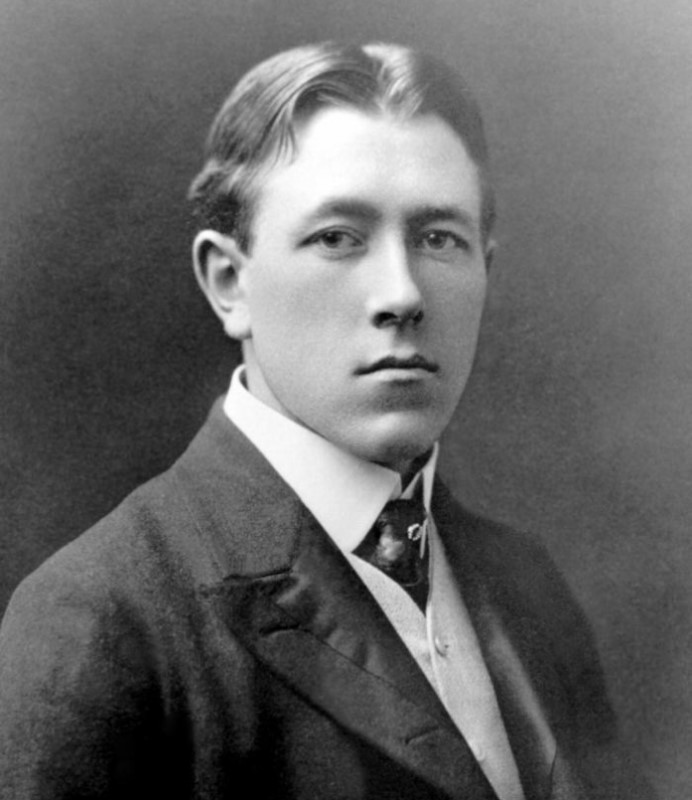
Colorado Dentist Frederick McKay began research into fluoride
In 1901, Frederick McKay, a young dental school graduate, left the East Coast to open a dental practice in Colorado Springs, Colorado. When he arrived, McKay was astounded to find scores of Colorado Springs natives with grotesque brown stains on their teeth. So severe could these permanent stains be, in fact, sometimes entire teeth were splotched the color of chocolate candy, known as the Colorado Brown Stain.
He found no mention of the brown-stained teeth in any of the dental literature of the day. Local residents blamed the problem on any number of strange factors, such as eating too much pork, consuming inferior milk, and drinking calcium-rich water.
In 1909, McKay collaborated with renowned dental researcher Dr. G.V. Black Black who investigated fluorosis for six years, until his death in 1915. During that period, he and McKay made two crucial discoveries. First, they showed that mottled enamel (as Black referred to the condition) resulted from developmental imperfections in children’s teeth. This finding meant that city residents whose permanent teeth had calcified without developing the stains did not risk having their teeth turn brown; young children waiting for their secondary set of teeth to erupt, however, were at high risk. Second, they found that teeth afflicted by Colorado Brown Stain were surprisingly and inexplicably resistant to decay.
in 1923. McKay trekked across the Rocky Mountains to Oakley, Idaho to meet with parents who had noticed peculiar brown stains on their children’s teeth. The parents told McKay that the stains began appearing shortly after Oakley constructed a communal water pipeline to a warm spring five miles away. McKay analyzed the water, but found nothing suspicious in it.
Nonetheless, he advised town leaders to abandon the pipeline altogether and use another nearby spring as a water source. Within a few years, the younger children of Oakley were sprouting healthy secondary teeth without any mottling. McKay now had his confirmation, but he still had no idea what could be wrong with the water in Oakley, Colorado Springs, and other afflicted areas.
The answer came when McKay and Dr. Grover Kempf of the United States Public Health Service (PHS) traveled to Bauxite, Arkansas-a company town owned by the Aluminum Company of America-to investigate reports of the familiar brown stains. The two discovered that mottled enamel disorder was prevalent among the children of Bauxite, but nonexistent in another town only five miles away. Again, McKay analyzed the Bauxite water supply. Again, the analysis provided no clues. But the researchers’ work was not done in vain.
McKay and Kempf published a report on their findings that reached the desk of ALCOA’s chief chemist, H. V. Churchill who conducted his own test of the water in Bauxite-but this time using photospectrographic analysis, a more sophisticated technology than that used by McKay. Churchill’s test reported the town’s water had high levels of fluoride.
Shortly after this discovery, PHS scientists started investigating a slew of new and provocative questions about water-borne fluoride. With these PHS investigations, research on fluoride and its effects on tooth enamel began in earnest. The architect of these first fluoride studies was Dr. H. Trendley Dean, head of the Dental Hygiene Unit at the National Institute of Health (NIH). Dean began investigating the epidemiology of fluorosis in 1931. One of his primary research concerns was determining how high fluoride levels could be in drinking water before fluorosis occurred.
Dean and his staff set out across the country to compare fluoride levels in drinking water. By the late 1930s, he and his staff had made a critical discovery. Namely, fluoride levels of up to 1.0 ppm in drinking water did not cause enamel fluorosis in most people and only mild enamel fluorosis in a small percentage of people.
Tags:
Source: University of Queensland
Credit:
